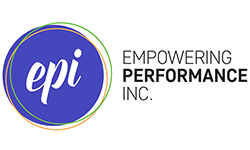Gathering the Best Details: Stories in Elearning
As we discussed in Part 1 of our storytelling series, using well-placed, “personalized” details in elearning stories is a simple way to increase learner engagement and retention. Many learning architects intuitively collect valuable cultural details as part of an information-gathering phase. So, if you know you’re going to use story as part of your course, be deliberate. Make detail-collection a conscious part of the process.
But what does this mean? Turn on your spidey sense as you step onto a client's site or into that conference call! Many of the more important nuances come quickly and subtly. There a few things you can tune into and ask for when meeting with your SME, liaison, or employee focus group.
Inventory the sensory experience of the work atmosphere.
What’s the décor and general office environment? Is it quiet? Or is there a busy, gentle hum? Are there plants or artwork? What is the color palette? The lighting? How do employees dress? Does it feel “homey” or corporate? What sights, smells, textures, and sounds create the overall feel? (Remember from Part 1: Sensory experiences will trigger engagement and retention in the learner.)
Pay attention to relationships and personalities.
Are employees formal in their interactions with one another? Or casual and approachable? Are there certain personality types and relationship dynamics that drive the day-to-day feel of the organization?
Understand language and communication patterns.
Do people communicate formally? Informally? Through email? Skype? IM? Or does communication primarily occur in meetings, water cooler chats, or after-work get-togethers? Certainly, if you plan to have dialogue in your story, these details matter.
Observe “moments.”
If you’re working with a client on-site, pay attention to “moments” that occur. Watch how employees engage with each other and their environment. You can translate the details of these moments into rich and relevant scenarios later.
Ask about “moments.”
Ask your clients to tell you stories. Many valuable details come from asking directly, “Can you tell me a story about when XYZ happened?” “Can you remember the moment you first realized XYZ? And why does that moment stick out for you?” So, don’t be afraid to ask them to describe key moments in detail.
Every organization has a collection of “moments” unique to them. By sleuthing for "moments," you'll naturally get at the real need for the training. At the same time, you'll uncover mini-stories that can stand alone in the course or be woven into a larger story framework.
Be present in conversations.
Yes, it can be that simple. Clients will often, without realizing it, share details you can use to flesh out a course’s story. Stay tuned in, and listen, listen, listen…
When you collect details, with intention, you'll be inspired to create elearning stories that are rich, relatable, and engaging. Learners will feel you truly understand them and their experience. And you'll develop great rapport with your client in the process. Win-win!
The next step is to strategically use the details you've gathered. We’ll cover that in Part 3…
Katherine Mullin, Learning Solutions Architect



